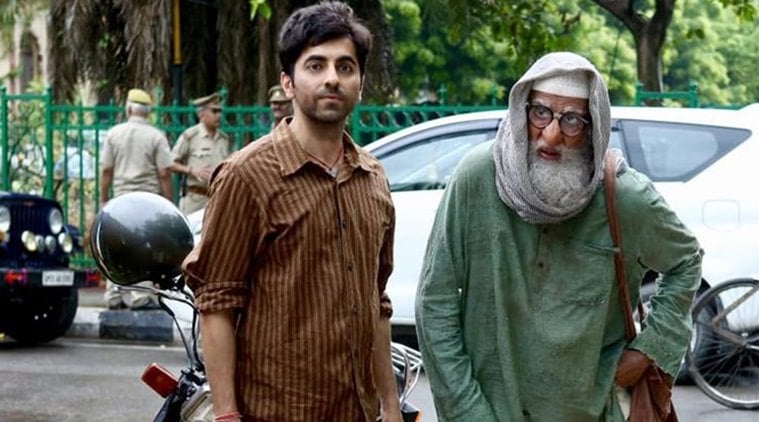 Narayan Srivastav with Gulabo and Sitabo. (Photo: Narayan Srivastav)
Narayan Srivastav with Gulabo and Sitabo. (Photo: Narayan Srivastav)
In the early ‘50s, when a newly Independent India was beginning to find a rhythm, and scores of people, fraught with the idea of freedom for a very long time, were finally aligning themselves with the concept of entertainment, a nomadic puppeteer family from Uttar Pradesh’s Pratapgarh was busy creating concept puppetry for entertainment and social messaging. Leading the family was Ram Niranjan Lal Srivastava, who created two female glove puppets — a man’s mistress and his wife — who were always at war. On other occasions, they were sisters-in-law fighting over domestic matters. The humour was sometimes bawdy, and sometimes directed at social evils such as dowry system, female infanticide, child marriage, and promotion of women empowerment and education, among others.
Soon, as Ram Niranjan, along with his family, began to tour the country with the two puppets, whom he called Gulabo and Sitabo, the protagonists became extremely popular. Huge crowds clamoured for Gulabo and Sitabo, as they brought many stories to life along with folk music, leaving viewers with extremely entertaining experiences. While Sitabo was the overworked simple woman, Gulabo was the other side, the imposing one. Ram Niranjan was associated with Agriculture Institute, Allahabad. The Institute would prepare workers for adult education. When Literacy House — a space for adult and informal education in Lucknow — was established in 1956, it became the nerve centre for literacy movement in India, and the craft got much attention. US-based famed puppeteers Bill and Cora Baird were consulted for establishing the Educational Puppetry Department at Literacy House, in order to create a productive environment for Sakshar Bharat programme. The use of puppets for social education was first introduced at Literacy House and Ram Niranjan Lal was one of the first few to be a part of it.
Around the same time, a professor, born and raised in the same little district of Pratapgarh in a neighbouring Srivastava family, was finding fame as a poet for his highly metaphorical work — Madhushala. Famed poet Harivanshrai Bachchan, who wrote Madhushala in 1935, was the toast of UP at the time and was teaching English at Allahabad University. He dropped his surname Srivastava and took the pen name Bachchan (meaning child).
 A still from director Shoojit Sircar’s upcoming film Gulabo Sitabo, starring Amitabh Bachchan and Ayushmann Khurrana.
A still from director Shoojit Sircar’s upcoming film Gulabo Sitabo, starring Amitabh Bachchan and Ayushmann Khurrana.
But the twain never crossed paths except that the Srivastava puppet family still refer to the Bachchan family as their own and “hamare hi Pratapgarh ke”. After a while, in the 80s and 90s, the puppets, their creator and puppetry itself stopped featuring in the public consciousness. Famed puppeteer and Padma awardee Dadi Pudumjee, through his larger than life puppets and Ishara Puppet Theatre, did revive some interest in the past few years, but as a folk art form, puppetry has largely been on a decline. So when director Shoojit Sircar announced his upcoming film Gulabo Sitabo, starring Harivanshrai Bachchan’s son Amitabh Bachchan along with Ayushmann Khurrana, the small puppet industry had its interest piqued. The twain had finally met. The film, which has been penned by Juhi Chaturvedi and will release on June 12 on Amazon Prime, is about the relationship between a landlord and tenant who can neither live with each other and nor without each other – also the premise of the two puppets.
Members of the Ram Niranjan Srivastava’s family, some of whom still create puppets and follow puppetry as a profession, were abruptly surprised to hear the two names — Gulabo and Sitabo — that have rung in their ears forever, being talked about in newspapers and on radio and TV. Ram Niranjan’s nephews — Lucknow-based Alakh Narain Srivastav, 80, and Narayan Srivastav, 56, who have carried on the tradition, believe that this attention will probably revive puppetry. “The artform is not just entertaining, it’s also educational — for children and adults alike. You will be surprised by the impact it can have,” says Narayan, who learned the art from his uncle Ram Niranjan and his elder brother Alakh Narain.
ALSO READ | The Show Goes On
Puppet shows rest on the concept of superbly engineered characters and according to Narayan, Gulabo Sitabo ruled the roost in glove puppetry for many years because they understood, passionately and profoundly, the characters their puppets represented. One has to train for years to be able to do this. “It’s a wood figure in a colourful costume with only one expression. It’s our voice, the story we are telling, which brings a dead doll to life. That same face, with that one expression, will smile for you and will turn sad depending on how we tell you the story. So the narration has to be pitch-perfect,” says Narayan Srivastav, who has also performed for former President APJ Abdul Kalam when he had visited Lucknow for a science conference. His last performance was at the Surajkund Mela in Faridabad earlier this year. Since March, when the pandemic hit India, there have been no shows.
While Narayan has continued to be a puppeteer and followed the artform of his ancestors despite hardships and dwindling audience, he says that the next generation isn’t so keen on taking this forward. “The art form has largely lost much of its significance. My elder brother now is too old; my son helps me make the puppets, but our children aren’t interested in this. With the upcoming film, people will wonder who are Gulabo and Sitabo? What does this new film’s title mean? And then the answers will lead to us and our work. It will probably help in some way. I am looking forward to seeing what the future holds for us,” he adds.